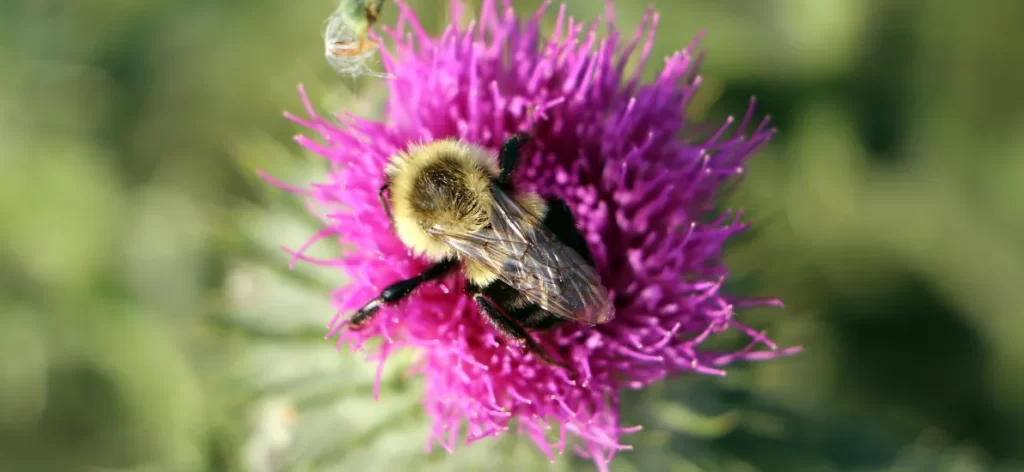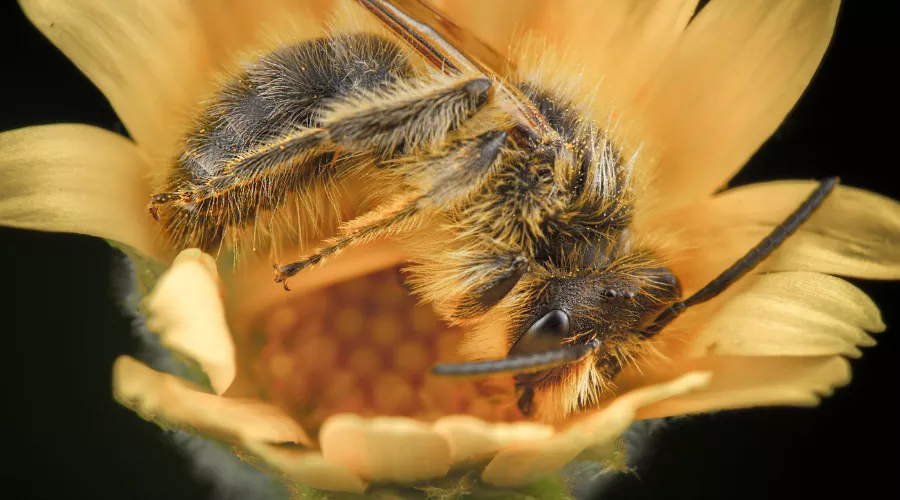Have you ever seen a bee sleep? Many of you would probably first think that bees do not sleep, wouldn’t you? And when I tell you they do sleep, then it’s very likely that you haven’t seen this scene yet.
Research by scientists has shown that bees sleep. Bees spend days and nights looking for nectar and pollen, caring for their young and serving the queen. Well, how can we think they don’t need a break too?
Do Bees Sleep?
They need sleep to recharge and renew their bodies, so they have the energy to support their families. All bees sleep, but the amount and location of their sleep varies depending on their role in society.
Bees are endlessly fascinating insects, even when they are sleeping! If you want to know where bees sleep, when bees sleep, how they behave during sleep, whether bees sleep at night, whether bees sleep on flowers, read on to find out.
Where Do Bees Sleep?
Another interesting study was conducted on the topic of sleeping bees. Among other things, scientists investigated whether the role of bees in society is crucial to where they sleep.
Research has led to the answer that older bees sleep closer to the edge of the nest or hive, while younger bees sleep inside the cells and also, closer to the center of the nest.

When Do Bees Sleep? Sleep Patterns In Bees.
Barrett Klein, a professor of biology who, among other things, studies the behavior of animals, presented his observations on sleep patterns in bees. The aim of the experiments and observations was to determine when bees sleep and how bees sleep.
Sleep patterns differed with the growth of bees, that is, how their tasks changed, from cleaning the cells, through nursing the brood, to collecting nectar and pollen.
Younger bees slept less frequently and irregularly, which is understandable since brooding was their full-time job. Circadian rhythmic sleep cycles became more and more pronounced at the stage of food recipients, in order to be fully established at the stage of collectors. For older bees, the active period lasts during the day, but that is why they sleep longer at night than younger bees.
Behavior Of Bees During Sleep – How Do Bees Sleep?
The scientist who first discovered that bees sleep is Walter Kaiser. Observations have shown that bees behave identically to humans during sleep. What does this mean?
During sleep, bees take a very relaxed posture and go through different phases of sleep (relaxed, light sleep, deep sleep). When a bee is in a deep sleep, their antennae descend, the upper body (chest) falls as well as the top of the abdomen (or tail), and the wings descend on the body!
They react less well to harassment, and their body temperature drops.
Unlike mammals, bees sleep much deeper before the end of the sleep period.
Also, during their sleep, certain different patterns occur in the bees’ brain.
Read the article: 20 Best Flowers For Bees, Butterflies And Other Pollinators
Do Bees Sleep In Flowers?
Small hard-working bees enter a pronounced state of sleep – mostly at night and in the hive. However, they sometimes sleep outside the hive. Tired food collectors can be seen sleeping on flowers. Beekeepers and bee photographers around the world have spotted and recorded bees sleeping in flowers. Bees on flowers can stay still for hours, usually until something upsets them.
Many species of wild bees regularly sleep in flowers. In many species of bees, the males stay outside at night, so the flowers come in handy for sleeping. This happens because the males have nowhere to go when they come out of the nest. They spend their days wandering around nesting sites looking for new females and perhaps defending their territory. They feed on nectar until the sun goes down, so they spend the night there.
Other common flower sleepers are bumblebees, both males and females. Especially in autumn, you can see young queens preparing for winter using flowers for the bed.

Do Bees Sleep At Night?
Yes, bees sleep at night. But, of course, not every bee sleeps in the hive during the dark hours. Some continue their tasks in the colony and rest during the day. How long they sleep depends on how old the bees are. The youngest bees sleep for 30 seconds every few hours. Older bees need more rest and sleep than younger adult bees.
If we want to know the numbers, they say that bees sleep between 5 and 8 hours in a 24-hour period.
Why Sleep Is Important For Bees?
Bees need sleep to rest and renew their energy because otherwise their work would be difficult.
Without proper rest, their ability to perform the necessary bee activities can decline and put the whole society in danger.
Sleep allows bees to recover from the strain of their work and successfully perform tasks such as searching for pollen, nectar and water, communicating with other members of the colony, defending the colony from predators, caring for the brood, cleaning hive cells… etc.
Scientists found that bees that did not have enough sleep nor had very little sleep were not able to perform their dance movements well during the day. Well rested bees give the best instructions in communication through dance.
Bees that have not had enough sleep are not good communicators.
Additionally, their memory is impaired. Tired bees found it harder to return to known food sources and found it harder to recognize the way home. They spent much more time on orienteering flights than resting bees.
Sleepless bees had difficulty learning new things. Responsibilities and tasks that are easy for them with a lack of sleep lasted longer.
Sleepy bees show signs of drowsiness during the day, for example antennae mobility was significantly lower.
Read the article: How Bees Make Honey?
Conclusion
Just as we need a good rest, so do bees. Hardworking bees need time to rest and sleep in order to function well in society. But we have seen that the dream of bees is different from human sleep.
We will not recognize a sleeping bee by its closed eyelids. They have no eyelids. By carefully observing the bees, we will notice that during sleep they stop moving their antennae and in some cases fall to the side.
The dormant bee also relaxes its muscles so that the upper body and the back are slightly cloned. Their wings can also be leaned against the body.
Now that you know the bees do sleep, you may notice someone napping on flowers in your yard or balcony. Be careful and considerate and let them rest.
Finally, enjoy some beautiful photos of sleeping bees.

